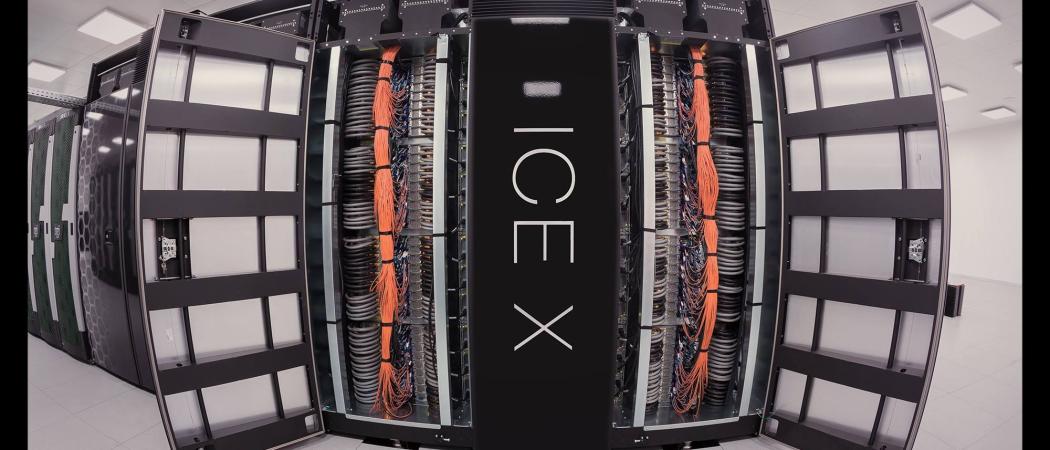Three EU-funded supercomputers in Bulgaria, Czech Republic and Slovenia will attract more big science projects, lure back expatriate researchers and help reduce the innovation gap between east and west

The Salomon supercomputer at IT4Innovation in the Czech Republic. Photo: IT4Innovation
With three of eight sites selected by the European Commission to host Europe’s new generation of supercomputers located in central and eastern Europe, researchers in the region hope the additional processing power will bring in more big science projects, attract talent and reverse the brain drain, by luring expatriate researchers to return home.
The three petascale computers, to be built in Bulgaria, the Czech Republic and Slovenia, are badly needed says Vit Vondrak, managing director of IT4Innovations National Supercomputing Centre, where the Czech Republic’s new EU supercomputer will be installed. “We have twice the demand for computing time than we have available resources,” he said.
The supercomputers will make research centres in the region more attractive to overseas researchers and allow the centres to gain access to new ideas and partner institutions, whilst also boosting the expertise of their own staff. “[It] will make our centre and also other research centres and institutes in the Czech Republic more attractive to international researchers,” said Vondrak.
Aleš Bošnjak, the director of the Institute of Information Science in Maribor, Slovenia, says the new supercomputers will encourage more researchers to work in the region and potentially reverse the brain drain to western Europe and North America. “Currently, Slovenian researchers often have to find work abroad where they have better opportunities for their research and we hope that this flow can be reversed with better work conditions in the future,” he said.
The eight supercomputers, being purchased and installed as part of EuroHPC, include three exascale machines capable of executing 150 million billion calculations per second, and five petascale machines capable of executing at least 4 million billion operations per second. All eight supercomputers are expected to be turned on by the end of 2020.
Following this, the European Commission is proposing to spend a further €2.7 billion on supercomputing facilities between 2021 and 2027.
Investment boost
Even with its new petascale computer, the Czech Republic will only “partially cover the increasing demand for computing resources,” Vondrak said. Further investment is “really needed” needed at the national level.
The latest innovation ranking of the European Commission places the Czech Republic and Slovenia among the ranks of “moderate innovators”, while Bulgaria has the second weakest innovation performance in the EU. In 2018, Slovenia had one of the largest declines in innovation performance.
To improve, researchers in EU member states that joined after 2004 are calling for more investment in R&D, which they say will improve the innovation potential of the EU as a whole.
“We have very good scientists and entrepreneurs who can help the whole EU to achieve sustainable prosperity and competitiveness in the global market,” said Vondrak. But at the moment, countries do not have comparable research and computing infrastructures. Researchers in central and eastern Europe “need as adequate tools as their colleagues from western Europe,” Vondrak said. “The Czech Republic and other countries in the region have to follow investment trends in supercomputing facilities if they want to keep [their] science and industry competitive globally.”
Most supercomputers in Europe are located in richer EU countries. According to Bošnjak, there are at least eight centres in Europe that are bigger and better than the petascale computer now being built in Slovenia. “This is a good time for the eastern part of Europe to catch up with the western and central Europe which already has highly developed infrastructure,” he said.
Vondrak’s research centre, IT4Innovation, uses supercomputers in drug design, computational chemistry, materials science, biosciences and engineering. With the new petascale system he would also like to focus on artificial intelligence and data science. “Our objective is to support researchers and companies that would like to set up very complex scientific and industrial workflows and pipelines,” he said.
IT4Innovation already has two supercomputers at VŠB - the Technical University of Ostrava, baptised Anselm and Salomon, and installed in 2013 and 2015 respectively. According to Vondrak, Salomon was “the first real Czech supercomputer,” ranked number 40 by Top500.org, an international league table of high-performance computers. “I hope that our new EuroHPC petascale system will reach an even better position,” he said.





 A unique international forum for public research organisations and companies to connect their external engagement with strategic interests around their R&D system.
A unique international forum for public research organisations and companies to connect their external engagement with strategic interests around their R&D system.